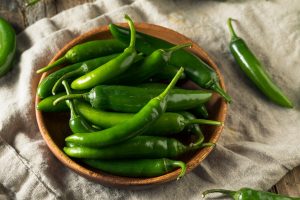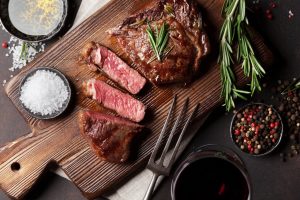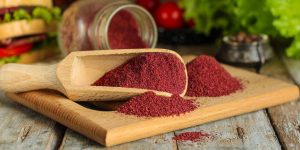
If you truly enjoyed a good plate of fajitas once, there’s a good chance that its meat was made with either skirt or flank steak. They may not exactly be the best cuts of steak, but they have an intensely beefy flavor perfect for fajitas and other recipes. They also absorb marinades quite well, which you have to do for most steak recipes. And since they’re often used interchangeably, many people confuse them with one another. Not only do people use them almost as synonymously, but it’s tough for some to differentiate them as well! Unless you take a closer look, the differences between skirt steak vs flank steak will truly rack your brain.
Now while they’re used interchangeably, they feature many differences from grain structure, size, shape, taste, and texture. So read on and find out about how they differ, how to prepare and cook them, and recipes you can try using these versatile cuts of steak.
What is a Skirt Steak?
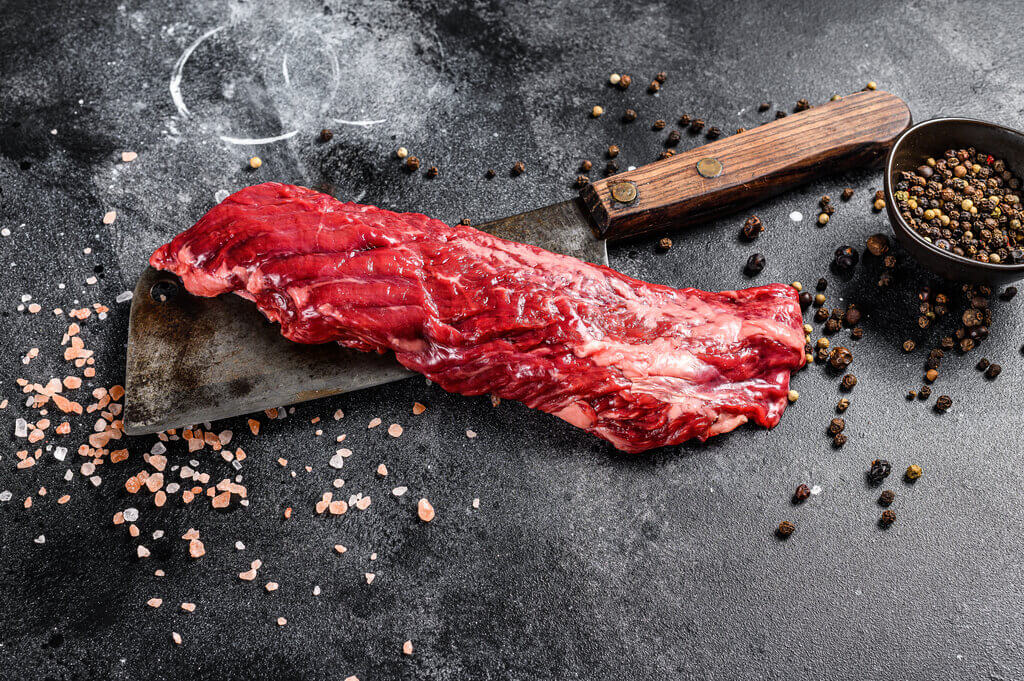
To understand a cut of steak better, you have to know where the cut is taken from.
Also called beef skirt, entrana steak, Romanian tenderloin, and Philadelphia steak, skirt steak is the diaphragm muscle of the cow, cut from the plate (which is in the center belly). If you happen to land your eyes on this cut in the supermarket, you probably won’t even realize that it’s a steak. Unlike other steak types, skirt steak has a long and thin cut with a few marbling of fat as well as connective tissue which makes the meat tough. It is not the prettiest of cuts, but it has a more intense beef flavor than flank.
Used almost as synonymously as flank steak, you can use skirt steak for pretty much how you use flank in the kitchen. If not flank or ribeye steak, you can also use skirt steak for some Philly’s cheesesteak. It’s also often found in fajitas and in this 20-minute beef stir-fry recipe. It is also known as a cheaper substitute for flank steak.
Types of Skirt Steak
There are two types of skirt steak: inside and outside skirt. If ever your butcher asks you what you need, don’t be confused. It’s just a matter of where in the plate they took and cut it from.
- Inside – As the name implies, this type is cut from inside the animal, more specifically in the abdominal muscle. It’s usually shorter and skinnier with more fat.
- Outside – While the inside skirt is cut from the abdominal muscle, this type is taken from the diaphragm outside the chest wall. It is wider, longer, and thicker with less fat than inside skirt. Unlike the inside skirt, this cut also has a thick membrane that you have to cut or trim before cooking.
Overall, the outside skirt is more tender and much more flavorful than the inside skirt. But whichever cut you prefer, both types are still fatter than flank steak which is relatively leaner.
How to Cook Skirt Steak?
Skirt steak has tough meat that can be daunting to cook. But unlike flank that’s leaner, skirt steak is tough because of connective tissues. The best way to cook skirt steak is quickly and over high heat, using a grill or a cast-iron skillet. Grilling will not only give your steak a smoky flavor but a good sear as well.
For the perfect medium-rare, grill each side for two minutes. For medium done, grill for three minutes. The recommended doneness should be kept medium-rare to medium done, or else your meat will be dry and chewy.
Skirt steaks don’t exactly need marinades, but this cut’s loose grain structure absorbs marinades quite well. Using one will also give your steak an extra oomph of flavor.
Aside from cooking skirt steak quickly over high heat, you can also slow cook skirt steak by braising or using the sous vide method. However, avoid overcooking it or the meat will toughen. And don’t forget to cut against the grain as it helps cut through those tough fibers. Lastly, serve them in thin strips for easier chewing!
READ ALSO: Pellet Grill Guide: What It Is, And The Best Pellet Grills To Choose From [2021 Edition]
Delicious Skirt Steak Recipes to Try
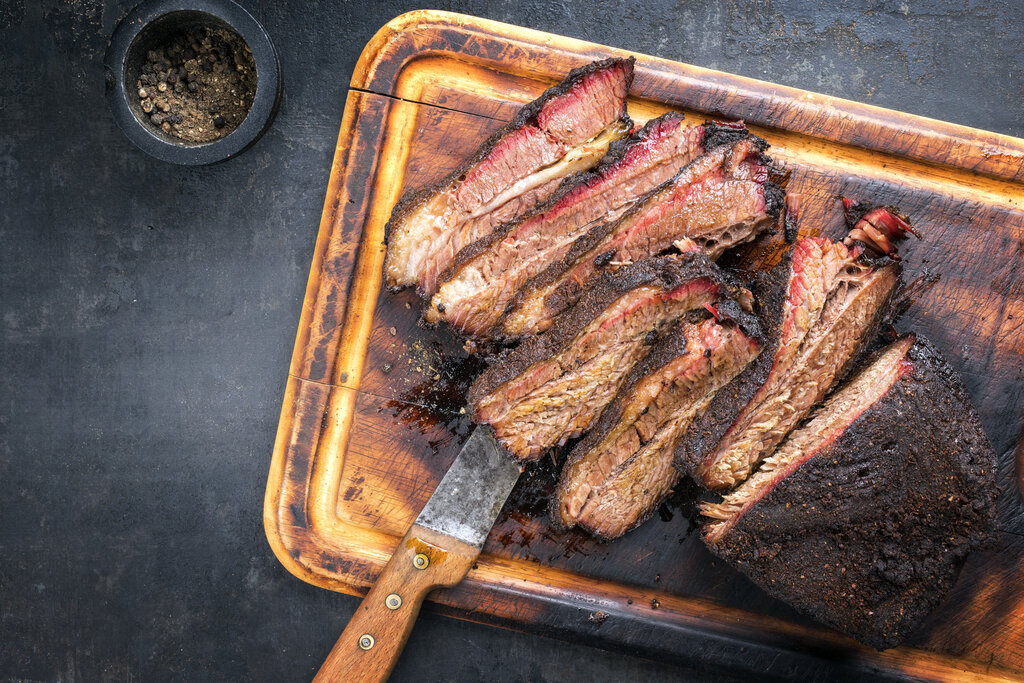
Now that you know how to cook skirt steak, how about trying your hand with a few skirt steak recipes? Bust out your pans or pellet grill for some searing and grilling!
- Chipotle Carne Asada — Here, skirt steak is marinated in aromatic chili peppers, lime juice, soy sauce, and flavorful spices. Pair your skirt steak with either tacos or burritos! Or how about both?
- Grilled Skirt Steak Skewers — If you’re looking for dishes you can serve at parties, you can try making these grilled skirt steak skewers that are marinated in honey, ginger, and soy sauce. They’re ridiculously easy to make too, so whipping up a huge batch won’t be a hassle.
- Smoked Steak Recipe — This recipe works well for sirloin, rib eye, and even flank and skirt. For your version, you can make smoked skirt steak using pepper, butter, and parsley.
- Easy Skirt Steak — Easy is an understatement. This recipe yields four servings of delicious steak using only four easy-to-find ingredients: skirt, salt, black pepper, and olive oil.
What is a Flank Steak?
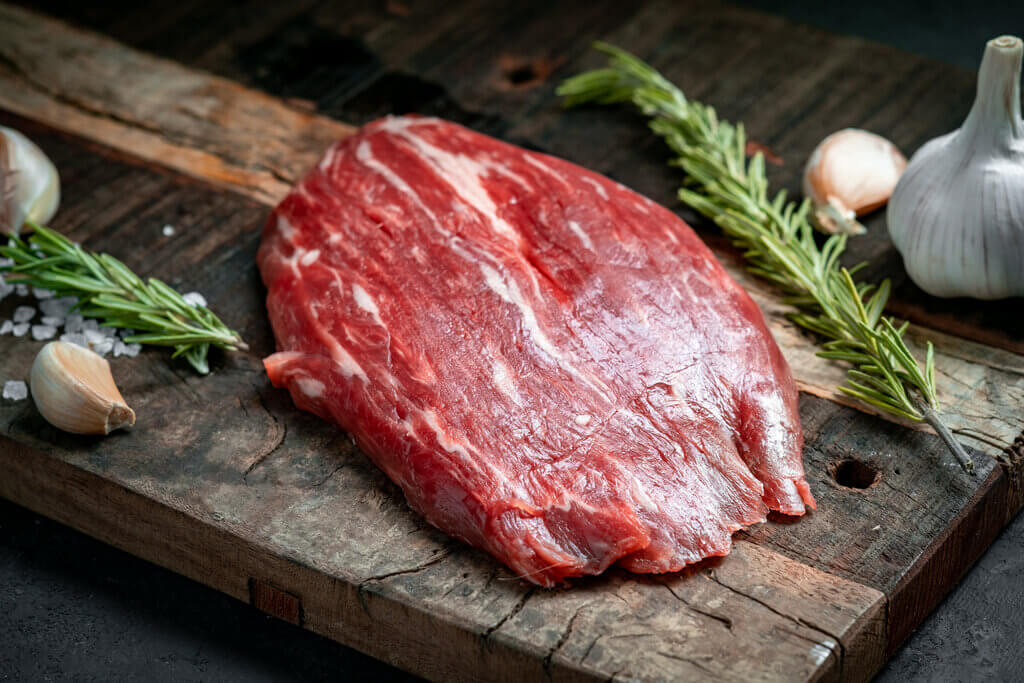
Flank steak (also commonly known as beef flank, plank steak, and Jiffy steak) is taken below the loin or rear belly of a cow, in the flank. The cut for flank steak is often large and squat. Taken in an abdominal area where there’s huge muscle and low-fat content, the meat is tough and can be difficult to cook and chew. Despite that, it more than makes up for its lean meat with a strong beefy flavor that’s full of umami.
So, what is flank steak used for? Because of its beefy and umami flavor, flank steak is perfect for grilling, stir-frying, broiling, roasting, and sautéing. It also makes flavorful Tex-Mex and Chinese recipes like stir-fry beef and even the favorite Mongolian beef recipe. This steak is also used as a skirt steak substitute in fajitas and London broil.
How to Cook Flank Steak?
For best results, cook over a pan or cast iron skillet on high heat for two to three minutes and let it rest for another 10 minutes. Recommended doneness for flank steak is medium-rare to medium. Medium rare has an internal temperature of 130 to 135 degrees F. While the medium is around 135 to 145 degrees F.
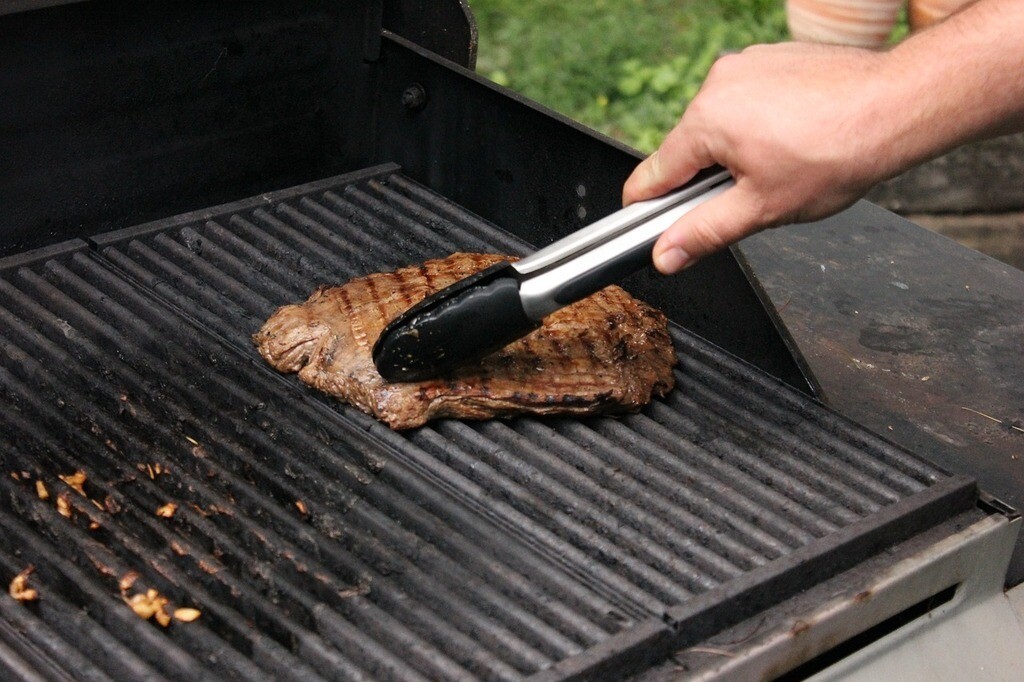
Considering its tough lean meat, cooking flank steak with great results can be tricky if you don’t know how to properly prepare and cook it. Unlike other meat that tenderizes when cooked for an extended time, overcooking flank steak can actually toughen its meat even more. To tenderize, there are a few easy methods you can follow: make shallow cuts into the meat, use a meat tenderizer, or incorporate marinades into the recipe. Good thing it takes well to marinades!
Aside from that, you should also cut across the grain in thin strips. Cutting thin strips across the grain breaks through tough muscle fibers allowing for tender meat that’s easier to chew.
Delicious Flank Steak Recipes to Try
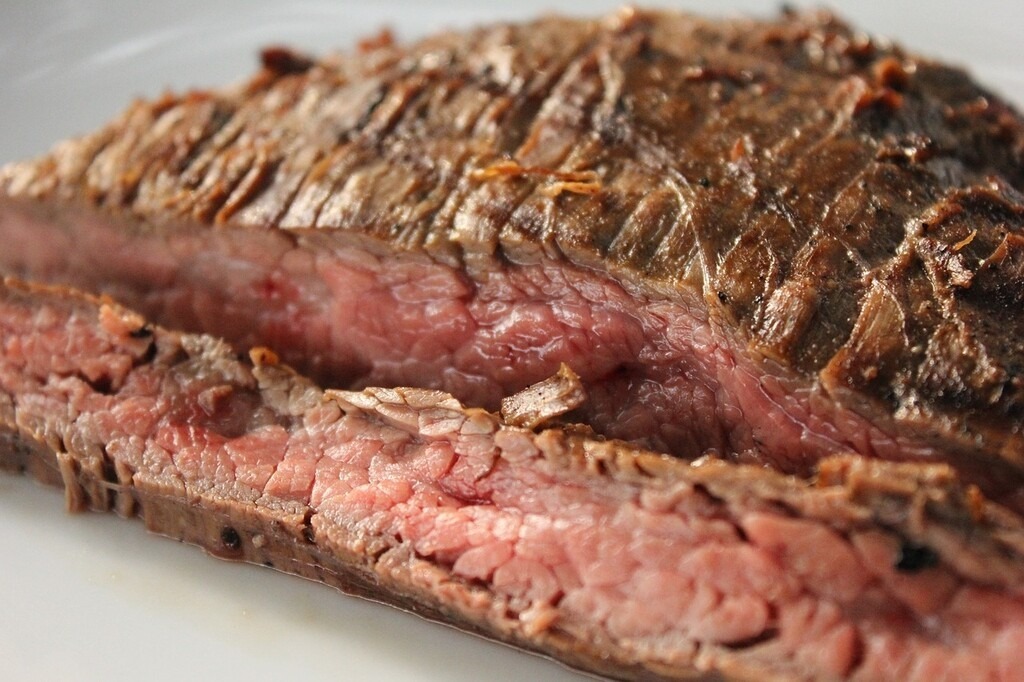
Beyond fajitas and stir-fries, there are many recipes you can try with flank steak that are as easy to make at home. Just remember to take note and practice what we discussed earlier so you won’t have a hard time with tough meat! Stock up on steak and try your hand at this shortlist of recipes we have here:
- Sous Vide London Broil — Flank steak may be cheap, but it sure doesn’t taste like it. And coupled with this recipe that uses sous vide cooking, we found a way to elevate the strong beefy taste of flank steak even more. We told you high heat and quick cooking is the best way to cook flank, but that’s not always the case. With this recipe, you’re practicing low-heat and long-time cooking sous vide is most famous for. It should be okay as long as you’re not overcooking it.
- Grilled Flank Steak with Garlic & Rosemary — Cook some delicious flank steak that’s marinated in olive oil, rosemary, and the classic salt and pepper combo. Grilled quickly and in high heat, you can make flavorful, melt-in-your-mouth beef thanks to the marinade that acts as a tenderizer too.
- Easy Steak Tacos — Love a good taco? Then you’re in luck! Flank steaks are also perfect meat fillings for tacos. What’s more, this version is also easier to prepare and cook compared to other taco recipes. Thanks to the flank cut, you only need to cook for a few minutes, making a scrumptious lunch (or dinner) meal in no time!
- Copycat Subway Philly Cheesesteak — Did you know that this American favorite is made of flank steak? Bust out your new kitchen skills and try Subway’s take on this classic sandwich. This recipe uses French bread and flank steak seasoned with pepper and onion. Top with cheese for the grand finale!
Skirt Steak vs Flank Steak
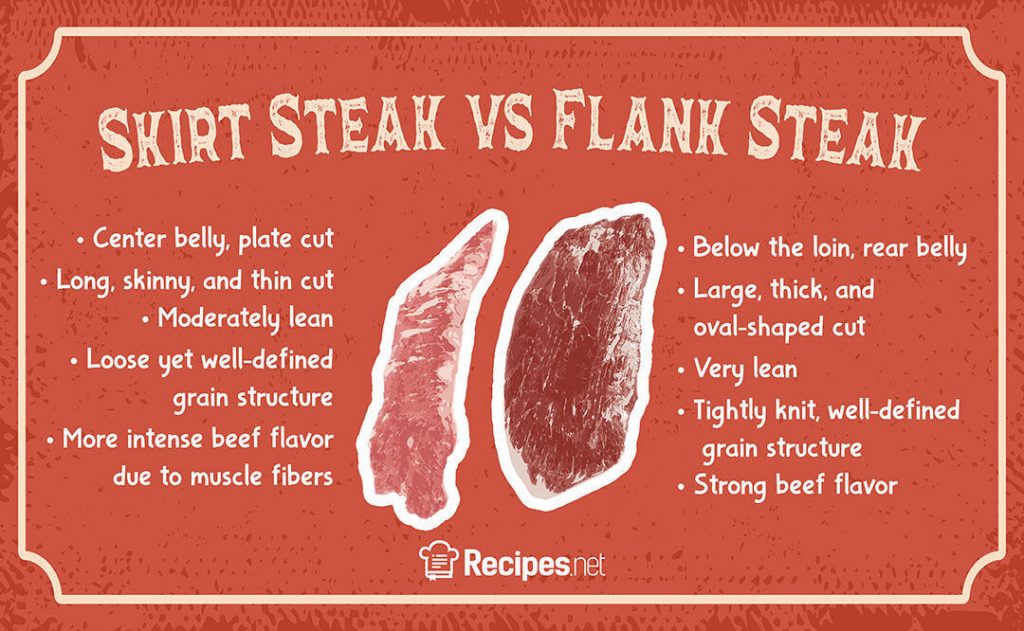
Now that you know what they are, let’s discover the key differences between a flank steak vs skirt steak!
Size and Shape
When it comes to shape and size, it’s easy to say they’re almost the same at first glance. But take a closer look and you’ll realize that skirt steaks are long, skinny, and thin. Whereas, flank steaks are large, thick, and oval-shaped.
Grain or Meat Structure
Ever wondered why flank steak is easier to slice than a skirt? That has something to do with their meat structure. Flank steak has close-knit, well-defined fibers that enable easy slicing. But, that also means that it can be difficult for the meat to absorb marinades fully. For skirt steak, it’s the other way around. Skirt steak has a loose yet well-defined meat structure that absorbs marinades quite well.
Taste
Though both cuts have a strong beefy taste, skirt steak has a more intense flavor than flank because it has a higher fat content. In particular, the outside skirt has a slightly more robust flavor than the inside, but generally, they taste almost the same.
Tenderness
It’s no secret that flank and skirt steak are no filet mignon. So of course, both cuts can be tough to chew, especially if you don’t know how to properly prepare and cook them. However, we can easily declare flank to be more tender.
Skirt steak has more connective tissues and muscle fibers than flank which makes the meat tough. Now, remember we told you that there are two types of skirt? The outside skirt is more tender than the inside skirt. It can rival flank steak in this matter. This is the reason why it’s the favorite pick among restaurants.
Skirt Steak vs Flank Steak: Which One is Better?
Flank steak and skirt steak each have their own charms when producing delicious dishes. Most people prefer flank because it’s larger, thicker, and slightly easier to prepare than a skirt. It’s slightly more tender too. On the other hand, restaurants often go for skirt steaks because it absorbs marinades better (plus it’s a cheaper alternative to flank). However, the two are ultimately synonymous with each other when it comes to the culinary world.
So, which is better? The answer is: it’s all a matter of personal preference. Prepare both the right way and you’ll end up serving some delicious steak meals for your loved ones tonight!
Was this page helpful?
Read Next: New York Strip vs Ribeye: Which One To Get?

